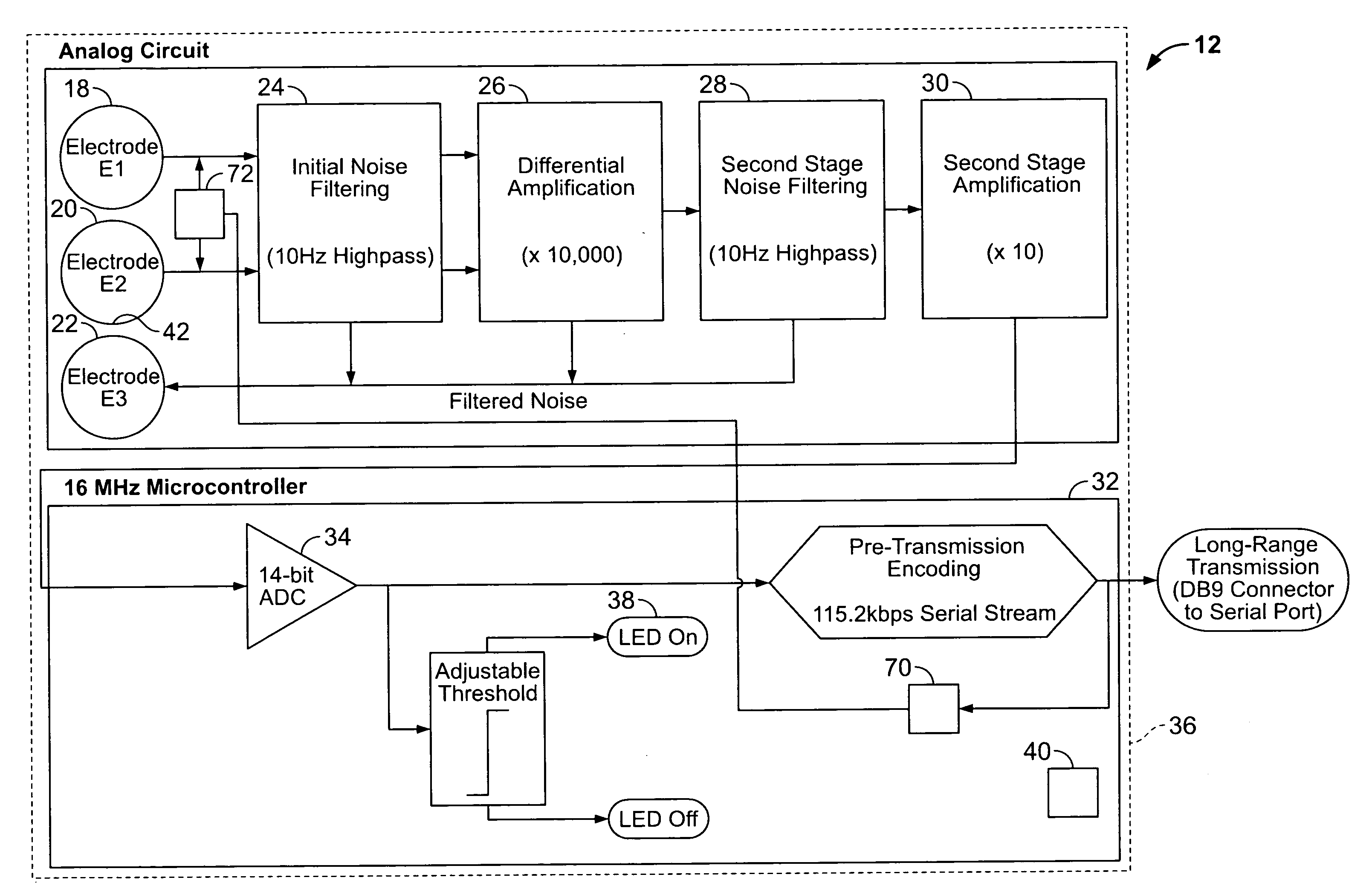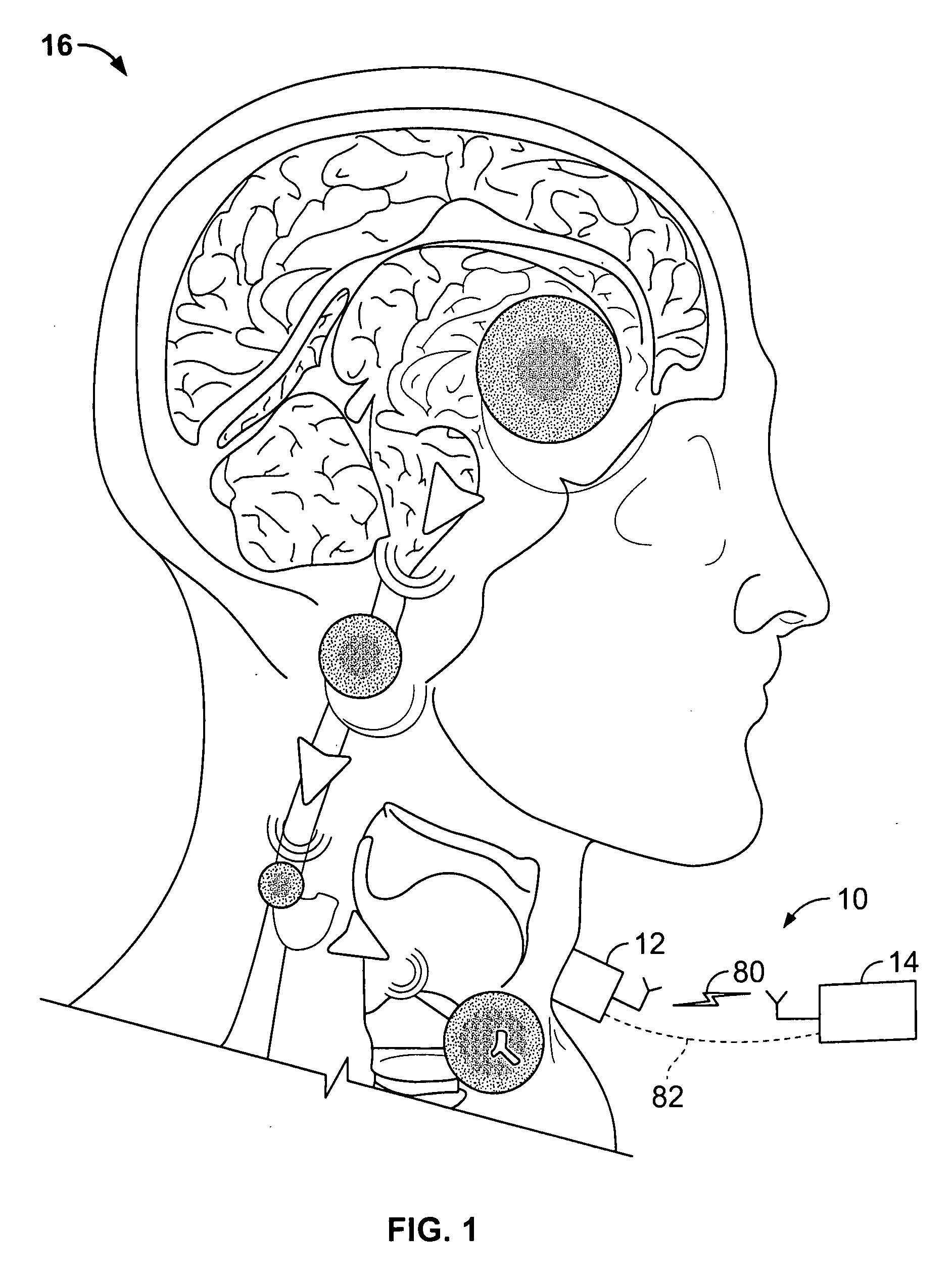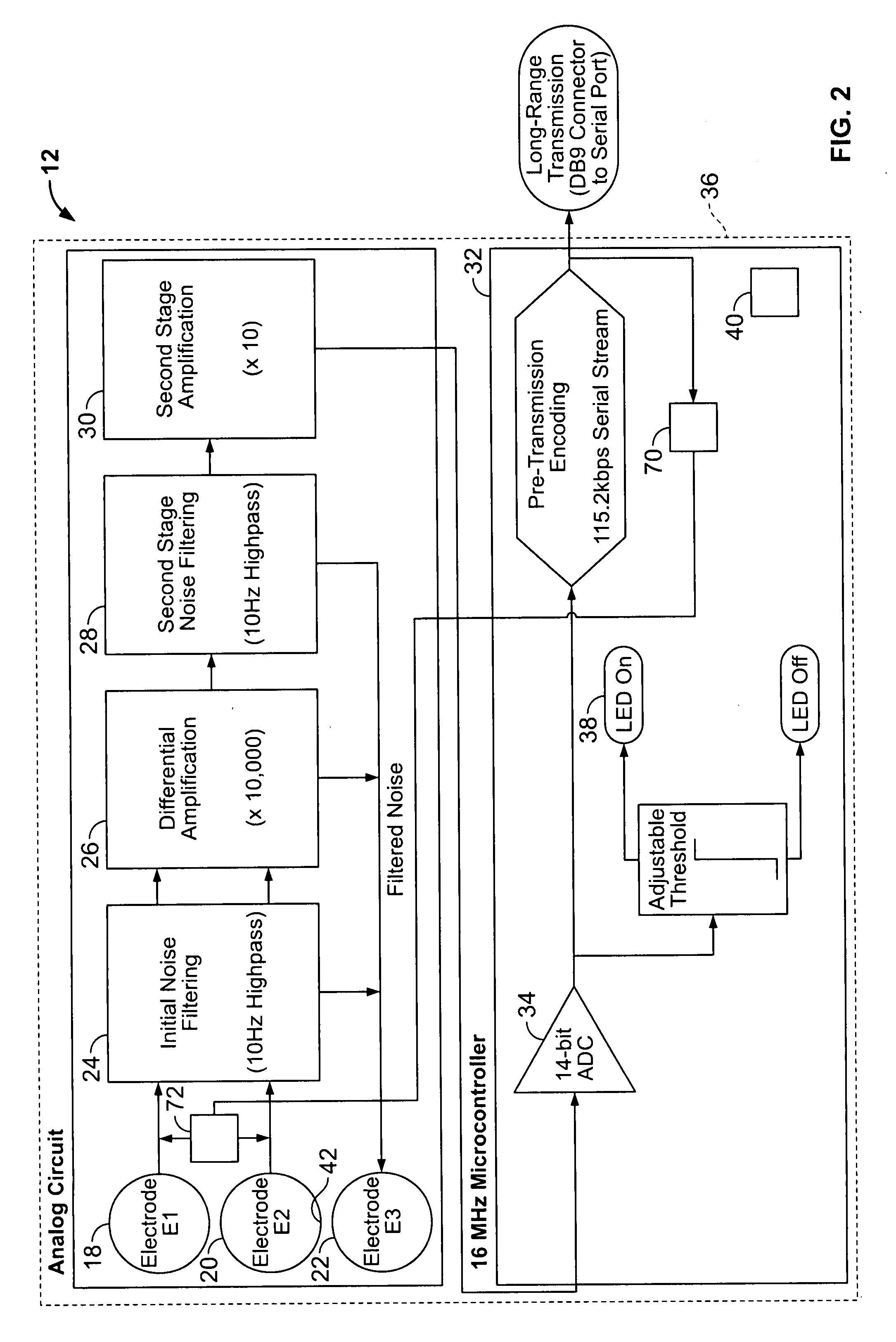Neural translator
a translation and neuron technology, applied in the field of neuronal translation, can solve the problems of unnatural or extensive training to use well, the patient is typically restricted to assistive movement and communication, and the patient is unable to initiate the movement of the primary extremities, including the arms, the neck, and the vocal cord
- Summary
- Abstract
- Description
- Claims
- Application Information
AI Technical Summary
Benefits of technology
Problems solved by technology
Method used
Image
Examples
Embodiment Construction
[0017]FIG. 1 depicts a neural translation system 10 shown generally in accordance with an illustrated embodiment of the invention. The neural translation system 10 may be used for processing a set of communicated signals associated with a set of muscles near the larynx of a person 16.
[0018]The system 10 may be used in any number of situations where translation of signals between the person and the outside world is needed. For example, the system 10 may be used to provide a human-computer interface for communication without the need of physical motor control or speech production. Using the system 10, unpronounced speech (thoughts which are intended to be vocalized, but not actually spoken) can be translated from intercepted neurological signals. By interfacing near the source of vocal production, the system 10 has the potential to restore communication for people with speaking disabilities.
[0019]Under one illustrated embodiment, the system 10 may include a transmitting device 12 rest...
PUM
 Login to View More
Login to View More Abstract
Description
Claims
Application Information
 Login to View More
Login to View More - R&D
- Intellectual Property
- Life Sciences
- Materials
- Tech Scout
- Unparalleled Data Quality
- Higher Quality Content
- 60% Fewer Hallucinations
Browse by: Latest US Patents, China's latest patents, Technical Efficacy Thesaurus, Application Domain, Technology Topic, Popular Technical Reports.
© 2025 PatSnap. All rights reserved.Legal|Privacy policy|Modern Slavery Act Transparency Statement|Sitemap|About US| Contact US: help@patsnap.com



